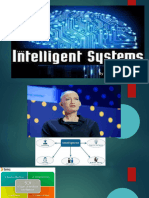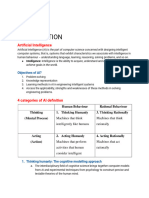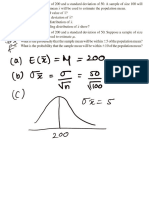0% found this document useful (0 votes)
88 views10 pagesIntro to Intelligent Systems
The document introduces intelligent systems, which are technologically advanced machines that can perceive and respond to their environment through sensors and computer vision. Intelligent systems have applications in areas like factory automation, medical care, education and more. Some examples provided are automated vacuums, facial recognition, and autonomous vehicles. Developing intelligent systems also presents challenges such as dealing with uncertainty from sensors, dynamic real-world changes, computationally intensive tasks, and computer vision mapping problems.
Uploaded by
anhtu9_910280373Copyright
© © All Rights Reserved
We take content rights seriously. If you suspect this is your content, claim it here.
Available Formats
Download as PDF, TXT or read online on Scribd
0% found this document useful (0 votes)
88 views10 pagesIntro to Intelligent Systems
The document introduces intelligent systems, which are technologically advanced machines that can perceive and respond to their environment through sensors and computer vision. Intelligent systems have applications in areas like factory automation, medical care, education and more. Some examples provided are automated vacuums, facial recognition, and autonomous vehicles. Developing intelligent systems also presents challenges such as dealing with uncertainty from sensors, dynamic real-world changes, computationally intensive tasks, and computer vision mapping problems.
Uploaded by
anhtu9_910280373Copyright
© © All Rights Reserved
We take content rights seriously. If you suspect this is your content, claim it here.
Available Formats
Download as PDF, TXT or read online on Scribd
/ 10

























































































